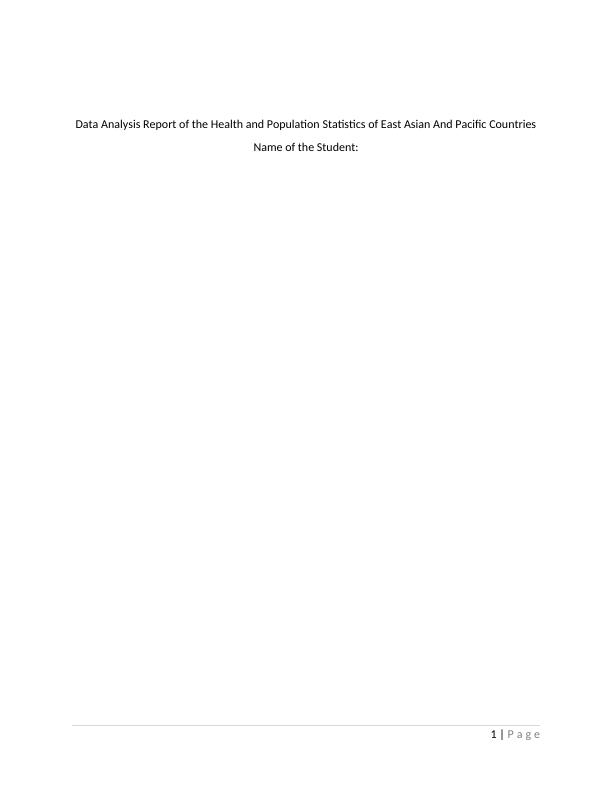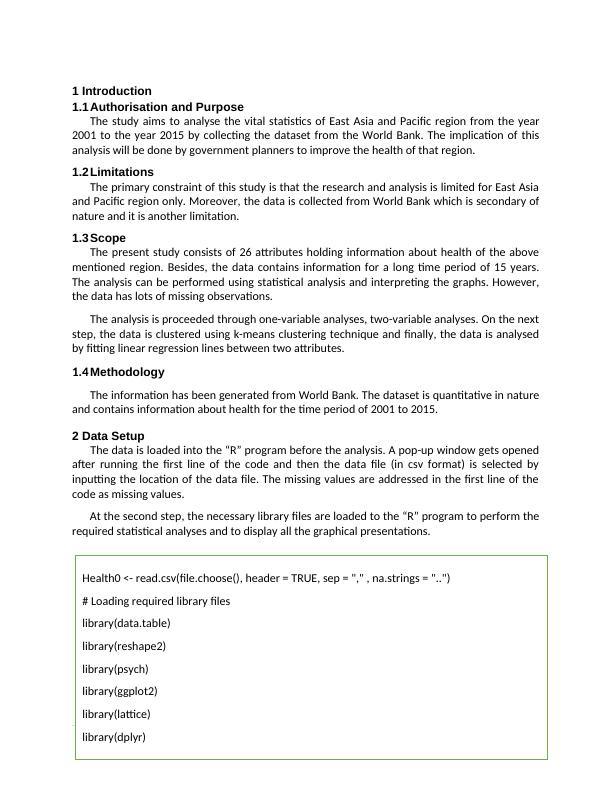Data Analysis Report of Health and Population Statistics of East Asian and Pacific Countries
15 Pages2593 Words166 Views
Added on 2023-06-11
About This Document
This report analyses the vital statistics of East Asia and Pacific region from 2001 to 2015. The report includes one-variable and two-variable analysis, clustering and linear regression to improve the health of the region. The report concludes that there is high level of GNI per capita for the country having country code MAC and there are outliers in the distribution of Gross national income if analysed country wise.
Data Analysis Report of Health and Population Statistics of East Asian and Pacific Countries
Added on 2023-06-11
ShareRelated Documents
End of preview
Want to access all the pages? Upload your documents or become a member.
Data Analysis Report of Health and Population Statistics of East Asian and Pacific Countries
|17
|3130
|360
Data Analysis Report of Health and Population Statistics of East Asian and Pacific Countries
|20
|3160
|304
(PDF) Analysis of Research in Healthcare Data Analytics
|17
|4129
|83
Data Analysis Report of Fatalities in Australian Road Accidents
|12
|2212
|59
Report on Demographic Analysis of East Asia and Pacific Countries
|19
|4001
|64
Introduction to Data Science
|11
|3150
|22




